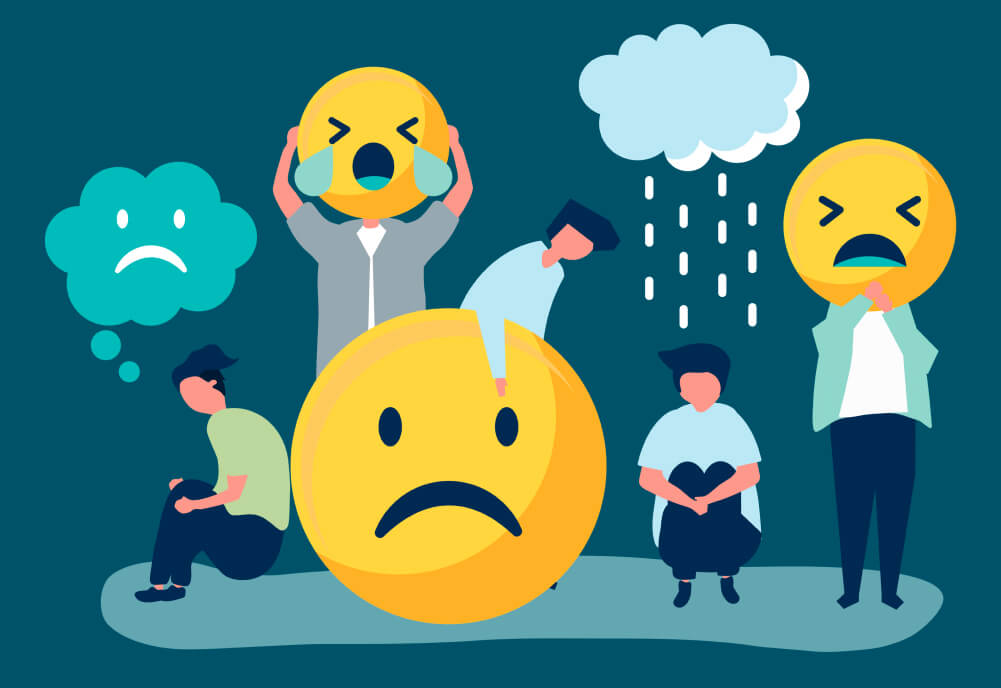Have you noticed a heightened sense of caution in your decision-making lately? Are you finding yourself hesitant to make major or perceived risky choices until things return to a sense of “normalcy”? If so, you’re not alone. In these uncertain times of the COVID-19 pandemic, many individuals are inclined to prioritize safety and avoid sudden changes that may disrupt their perceived stability. Rather than embracing risk, they tend to exhibit loss aversion.
After enduring over a year of implementing drastic measures to safeguard our own well-being and that of our loved ones, it’s not surprising that some people would prefer to remain in a state of caution even when confronted with situations that pose minimal threat to their lives. While the pandemic has certainly fostered resilience and the acquisition of new skills, it has also inadvertently influenced our propensity for risk-taking.
Taking Risks, Making a Change
In a world filled with uncertainty and caution, taking risks and making a change can be a daunting task. The COVID-19 pandemic has instilled a sense of fear and hesitancy in many individuals, causing them to shy away from making bold decisions. However, it is important to recognize the value of taking risks and embracing change, even in the face of adversity.
Taking risks is an essential component of personal and professional growth. It pushes us outside of our comfort zones and opens doors to new opportunities and experiences. By stepping into the unknown, we allow ourselves to learn, adapt, and discover hidden talents and abilities.
Making a change requires a willingness to challenge the status quo and break free from the familiar. It may involve leaving behind what is safe and comfortable in search of something better. Change can be uncomfortable and unsettling, but it also has the potential to lead to personal fulfillment and success.
While the pandemic has undoubtedly impacted our risk-taking behavior, it is crucial to resist the temptation to let fear dictate our actions. Instead, we should approach risks with careful consideration and strategic planning. This involves assessing the potential benefits and drawbacks, gathering information, and seeking support and guidance when needed.
Moreover, embracing change requires a mindset shift. It involves cultivating resilience, adaptability, and a positive attitude towards uncertainty. It means recognizing that change is a natural part of life and that taking calculated risks is essential for personal and professional development.
To overcome the fear of taking risks and making a change, it can be helpful to set clear goals, create a plan of action, and break the process into smaller, manageable steps. Surrounding oneself with a supportive network of individuals who encourage growth and provide guidance can also provide the necessary confidence and motivation.
Ultimately, taking risks and making a change is about trusting oneself and embracing the unknown. It is about seizing opportunities, pursuing passions, and refusing to let fear hold us back. By embracing a mindset of growth and resilience, we can navigate uncertain times with courage and create a future that is both fulfilling and meaningful.
Why Are People Afraid to Take Risks?
People often experience fear when it comes to taking risks due to various reasons. Understanding these underlying factors can shed light on why individuals may hesitate or feel apprehensive about stepping outside their comfort zones.
- Fear of Failure: One of the primary reasons people are afraid to take risks is the fear of failure. They worry about the potential negative consequences and the impact it might have on their self-esteem, reputation, or future opportunities. The fear of making mistakes or falling short of expectations can be paralyzing, leading individuals to avoid taking any risks altogether.
- Uncertainty and the Unknown: Taking risks inherently involves venturing into the unknown. People may feel uncomfortable and anxious about the potential outcomes because they cannot predict with certainty what will happen. The fear of stepping into unfamiliar territory and not having control over the situation can deter individuals from taking risks.
- Comfort Zone and Familiarity: Humans are creatures of habit, and familiarity often provides a sense of security. Stepping outside one’s comfort zone means venturing into uncharted territory, which can be unsettling. People may prefer to stay within their comfort zones where they feel competent, confident, and in control, even if it means missing out on potential growth opportunities.
- Social and Peer Pressure: The opinions and judgments of others can significantly impact an individual’s willingness to take risks. The fear of criticism, rejection, or social disapproval can discourage people from pursuing their goals or making bold decisions. Peer pressure to conform to societal norms and expectations may also hinder individuals from taking risks that deviate from the perceived norm.
- Previous Negative Experiences: Past experiences of failure, rejection, or disappointment can leave a lasting impact on an individual’s willingness to take risks. Negative experiences can create a fear of repeating similar outcomes, leading individuals to become more cautious and risk-averse in their decision-making.
- Lack of Confidence and Self-Belief: Low self-confidence and a lack of belief in one’s abilities can undermine the willingness to take risks. Individuals may doubt their skills, competence, or capacity to handle challenges, leading them to avoid situations that require taking bold steps.
Overcoming the fear of taking risks requires self-awareness, mindset shifts, and building resilience. It involves reframing failure as a learning opportunity, embracing uncertainty as a chance for growth, and cultivating self-confidence through continuous self-improvement and positive self-talk. Seeking support from mentors, coaches, or trusted individuals can also provide encouragement and guidance in navigating risks effectively.
By understanding and addressing the underlying fears that hold people back, individuals can develop a healthier relationship with risk-taking and embrace opportunities for personal and professional growth.
The Sweeping Influence of Loss Aversion
Loss aversion refers to the tendency of individuals to prefer avoiding losses over acquiring equivalent gains. It is a powerful cognitive bias that influences decision-making and risk-taking behaviors. Understanding the sweeping influence of loss aversion can provide insights into why people often make choices based on minimizing potential losses rather than maximizing potential gains.
- Psychological Impact: Losses have a more significant psychological impact on individuals compared to equivalent gains. Research has shown that the negative emotional response to a loss is typically twice as strong as the positive emotional response to a gain of the same magnitude. This asymmetry in emotional reactions leads people to prioritize avoiding losses to protect their well-being and sense of security.
- Risk Aversion: Loss aversion contributes to risk aversion, where individuals are more inclined to avoid risky options or uncertain outcomes. The fear of losing something valuable outweighs the potential benefits that may come from taking risks. As a result, individuals tend to opt for safer, more conservative choices, even if it means sacrificing potential gains.
- Status Quo Bias: Loss aversion also contributes to the status quo bias, the tendency to prefer maintaining the current state of affairs rather than making changes. People are often resistant to change because they perceive potential losses associated with disrupting the familiar and known. This bias can hinder personal and professional growth as individuals may avoid taking necessary risks to pursue new opportunities.
- Decision-Making: Loss aversion influences decision-making processes by skewing the evaluation of alternatives. Individuals tend to overvalue the potential losses and focus more on the risks and downsides rather than objectively assessing the potential gains. This bias can lead to missed opportunities and a conservative approach to decision-making.
- Investment and Financial Behavior: Loss aversion plays a significant role in investment and financial decision-making. Investors tend to hold onto losing investments in the hope of recouping their losses, known as the “disposition effect.” This behavior stems from the desire to avoid realizing losses, even if it means missing out on more lucrative investment opportunities.
- Business and Marketing: Understanding loss aversion is crucial in business and marketing strategies. Companies often utilize loss-framed messaging to emphasize potential losses customers may incur by not purchasing their products or services. This taps into the psychological impact of loss aversion to motivate action and drive customer behavior.
Overcoming the influence of loss aversion requires awareness and deliberate efforts. It involves reframing losses as learning experiences and focusing on the potential gains and benefits of taking risks. By recognizing the biases associated with loss aversion, individuals can make more balanced and rational decisions, embrace change, and seize opportunities for growth and success.



